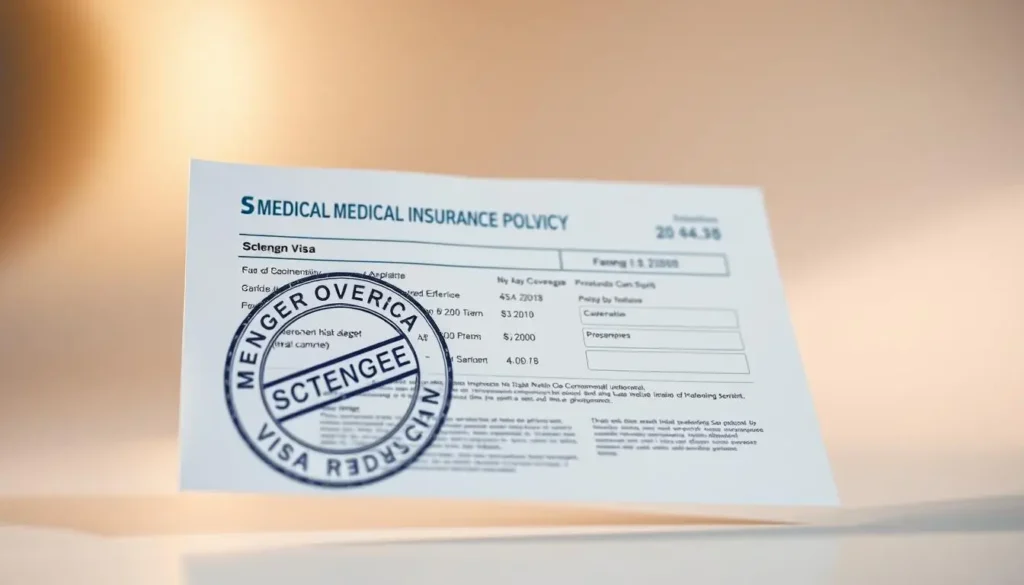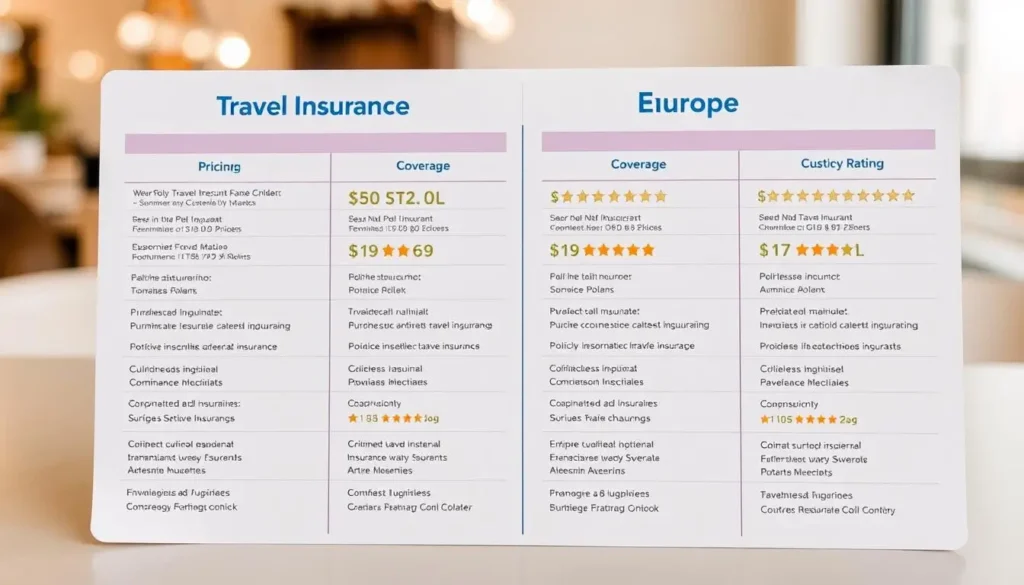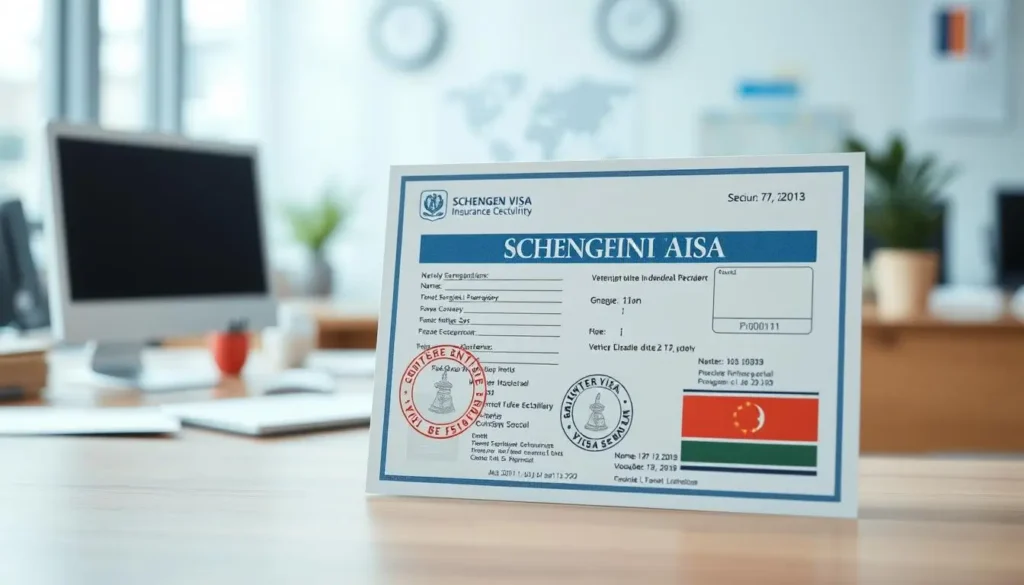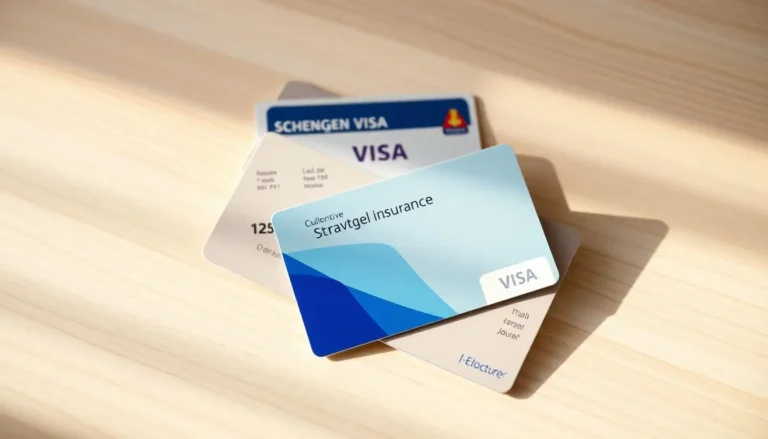How to Get Medical Insurance for Schengen Visa Approval
Planning a trip to Europe is thrilling, but it needs careful planning. Especially when it comes to Schengen visa requirements. Getting the right travel insurance is key. It’s not just a visa requirement but also a safety net for unexpected medical issues.
Having the right travel insurance is crucial for a smooth visa application. In this article, we’ll show you how to get the right medical insurance for Schengen visa approval. We’ll cover the types of insurance and how to pick the best provider.
Key Takeaways
- Understanding the importance of travel insurance for Schengen visa approval
- Types of travel insurance available for Schengen visa applicants
- How to choose the right insurance provider for your needs
- Tips for a smooth visa application process
- Common mistakes to avoid when applying for travel insurance for Schengen visa
Table of Contents
Understanding Schengen Visa Insurance Requirements
When you apply for a Schengen visa, knowing about insurance is key. Your chosen insurance must meet certain standards to get your visa.
Minimum Coverage Requirements
The minimum insurance needed is usually €30,000. This is to cover medical costs, like hospital stays and getting you back home, while in the Schengen area. Make sure your policy has at least this amount to avoid visa issues.
Duration of Coverage Needed
The length of your stay in the Schengen area determines the insurance duration. Your policy must be valid for your entire trip. If you’re visiting several Schengen countries, your policy should cover all of them.
Countries Covered by the Policy
The Schengen Area includes 26 European countries. Your policy must be valid in all these places. Check that your insurer covers all Schengen countries to meet visa needs.

Knowing these requirements helps you pick the right insurance. This boosts the likelihood of your visa being approved.
Medical Insurance for Schengen Visa: Types and Options
Finding the right medical insurance for your Schengen visa can be tough. But it’s a key step in planning your trip. You must pick the insurance that fits your travel plans best.
Single-Entry vs. Multiple-Entry Insurance Options
First, decide if you need single-entry or multiple-entry insurance. Single-entry is for those with set plans, covering one entry into the Schengen area. Multiple-entry is for those with changing plans, allowing for many entries and exits.
Short-Term vs. Long-Term Coverage Plans
Next, think about how long you’ll need coverage. Short-term coverage plans are for visits up to 90 days, great for tourists or business travelers. Long-term coverage plans are for longer stays, needed by students or workers.
Basic vs. Comprehensive Coverage
Lastly, consider the level of coverage. Basic coverage is the minimum, covering emergency medical and repatriation. Comprehensive coverage adds extra benefits like trip cancellations and lost luggage, offering more protection.

Knowing these options helps you choose the right medical insurance for Schengen visa. This ensures you meet visa rules and protect your health and travel plans.
How to Choose the Right Insurance Provider
Finding the right insurance provider is key for a successful Schengen visa application. There are many options out there. It’s important to compare them to find the best fit for you.
Evaluating Insurance Company Credibility
When picking an insurance provider, check their credibility. Seek out those that have a solid reputation and are well-regarded. Make sure they are registered and have a good track record with customers.
Comparing Prices and Coverage
Look at various providers to see their prices and coverage differences. Make sure the policy meets the Schengen visa’s minimum requirements. Be careful of very cheap options that might not cover enough.
Reading Customer Reviews and Ratings
Customer reviews and ratings offer insights into a provider’s reliability and service. Look for reviews on independent sites for a fair view.

Insurance Providers Popular with US Travelers
Some providers are favorites among US travelers. Research these and compare their options. Here’s a comparison table:
| Insurance Provider | Price Range | Coverage |
| Allianz | $20-$50 | Up to $100,000 |
| AXA | $25-$60 | Up to $150,000 |
| Generali | $30-$70 | Up to $200,000 |
By carefully evaluating providers based on credibility, price, coverage, and customer reviews, you can make a smart choice. This will help you pick the right insurance for your Schengen visa application.
Step-by-Step Process to Purchase and Submit Insurance
To make your Schengen visa application smooth, it’s important to know how to buy and submit insurance. This guide will walk you through the steps. It will help you get the right coverage and documents for your visa.
Determining Your Travel Dates and Destinations
First, figure out when and where you’ll travel. Knowing your stay’s length and destinations is key. It helps choose the right insurance policy.
Key considerations include:
- The overall length of your visit to the Schengen Area
- The specific countries you plan to visit
- Planned activities that may need extra coverage
Applying for Insurance Online
After figuring out your travel plans, apply for insurance online. Many sites offer easy-to-use forms for quotes. Evaluate different policies to discover the most suitable option for you.
Tips for applying online:
- Use reputable insurance websites
- Fill out the application form accurately
- Make sure you read and understand the policy terms before buying.
Receiving and Verifying Your Insurance Certificate
After buying insurance, you’ll get a certificate. Make sure it’s correct and meets visa requirements.
What to Check in Your Certificate
Check your certificate for:
- Your name and date of birth
- Policy number and dates of coverage
- Coverage amount (minimum €30,000)
- Statement that the policy is valid for all Schengen countries
How to Spot Potential Issues
Look over your certificate for errors or missing info. Common issues include wrong dates or coverage. If you find problems, contact your provider right away.
Including Insurance Documentation in Your Visa Application
Finally, add your insurance documents to your visa application. Make sure you have a physical copy of your certificate. Include it with your other documents when you apply.
Remember: Your insurance certificate is a key part of your visa application. Check it’s accurate and complete before you submit.
Handling Special Situations and Changes
Life is full of surprises, and your travel plans can change. It’s important to know how to adapt. When planning a trip to the Schengen area, remember it’s more than booking a flight and hotel. You also need to be ready for any unexpected situations.
What To Do if Your Travel Plans Shift
If your plans change, tell your insurance provider right away. Many policies let you adjust dates or even change destinations. Check your policy or call your insurer to see what you can do.
Insurance for Travelers with Pre-existing Conditions
Travelers with health issues need special care when picking insurance. Look for a policy that covers your condition and be ready to share medical records. Some insurers focus on pre-existing conditions, so it’s good to compare.

Extended Stays and Insurance Renewals
If you’re staying longer than planned, you might need to renew your insurance. Make sure the new policy meets Schengen visa rules and doesn’t leave you uncovered.
Emergency Assistance While Traveling
In a medical emergency, your insurance should offer 24/7 help. This service can find medical care, arrange hospital stays, and provide translations. Keep your insurer’s emergency contact handy while traveling.
Conclusion
To make your Schengen visa application go smoothly, knowing about medical insurance is key. Medical insurance is not just a must; it’s a safety net against unexpected medical costs in Europe. Your travel insurance in Europe must cover at least €30,000 for emergencies and repatriation.
Choosing the right insurance is crucial for a successful visa application. Look for insurance companies that are reliable, have good customer reviews, and offer full coverage. A policy that matches your travel plans can help avoid visa application issues.
In short, getting the right medical insurance for your Schengen visa is very important. By understanding what’s needed and picking the right policy, you can increase your chances of a successful visa application. This ensures a worry-free trip to Europe.
FAQ
What is the minimum coverage required for Schengen visa insurance?
You need at least €30,000 in coverage.
How long should my Schengen visa insurance coverage last?
It needs to cover your whole stay in the Schengen area.
Do I need to purchase a separate insurance policy for each Schengen country I visit?
No, one policy should work for all Schengen countries.
What is the difference between single-entry and multiple-entry insurance options?
Single-entry lets you in once. Multiple-entry lets you in and out many times.
Can I purchase Schengen visa insurance if I have pre-existing medical conditions?
Yes, but you might need to declare them and get extra coverage.
How do I choose the right insurance provider for my Schengen visa application?
Look at the company’s reputation, compare prices and coverage, and read reviews.
What should I look for in my insurance certificate?
Make sure it has your name, policy number, coverage amount, and how long it lasts.
What happens if my travel plans change?
Tell your insurance provider to update your policy.
Can I renew my Schengen visa insurance if I extend my stay?
Yes, you can renew it or get a new policy for your longer stay.
How do I get emergency assistance while traveling in the Schengen area?
Call your insurance provider’s emergency number for help.
Are there insurance providers that are popular among US travelers?
Yes, Allianz Partners and AXA are known for covering US travelers.







